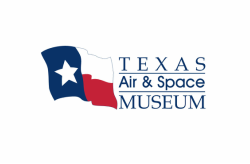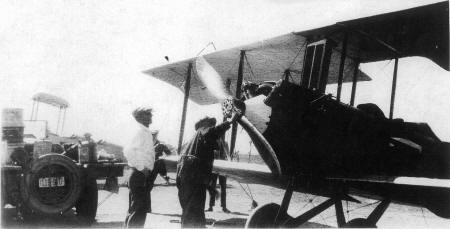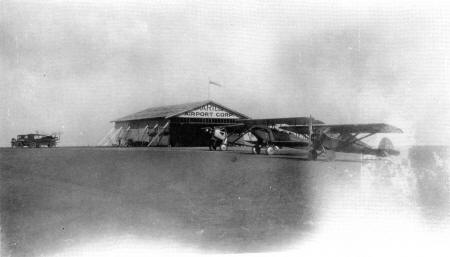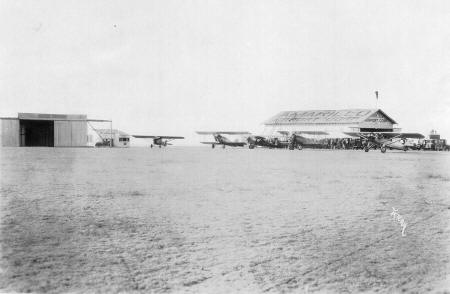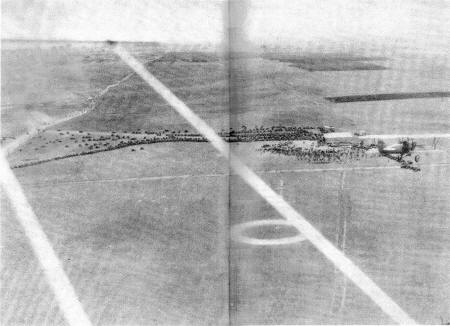The Airports - English Bivins Flying Field 1926-1929
Location: 3 miles north of Amarillo; 1 mile west of Pleasant Valley Elementary School;
near River Road; west of Smelter Road; west side of Ross Rogers Golf Course
near River Road; west of Smelter Road; west side of Ross Rogers Golf Course
|
In 1926, the Bivens Addition of the city was platted and the old Bivins Field had to move. With twelve horses, and heavy beams and rollers, Lloyd Bivins moved the hangar from Bivins Field to a section of Bivins land that was located 3 miles northwest of the city. By 1928, this new landing field was listed on Army maps and had a flying school, all managed by Lt Gray. In June of 1928, Harold English became manager of the field.
English Bivins Flying Field is the true birthplace of aviation in the Texas Panhandle. Because of Amarillo Airport Corporation's excellent service, this airport developed a great reputation with cross country flyers and the US Army. Continental Airlines made its maiden flight through English Bivins Flying Field. |
|
The first truly, commercial scheduled flight flight took place in 1928 when Harold English, backed by Paul Braniff of Braniff Airways, began regular round-trip flights to Oklahoma City. It was at this time that a US Army official traveled to Amarillo and recommended to city officials that they designate this airport as the city's Municipal Airport. |
|
English Bivins Flying Field ceased operation in September of 1929 when Harold English and Thornton Oxnard opened the new English Field airport seven miles east of Amarillo. The hangars, that were built at the old Bivins Field, then moved to the English Bivins Flying Field were now torn down and transported to the Bivins Ranch. |
Additional English Bivins Flying Field photos and historical records may be seen at the Texas Air & Space Museum.
